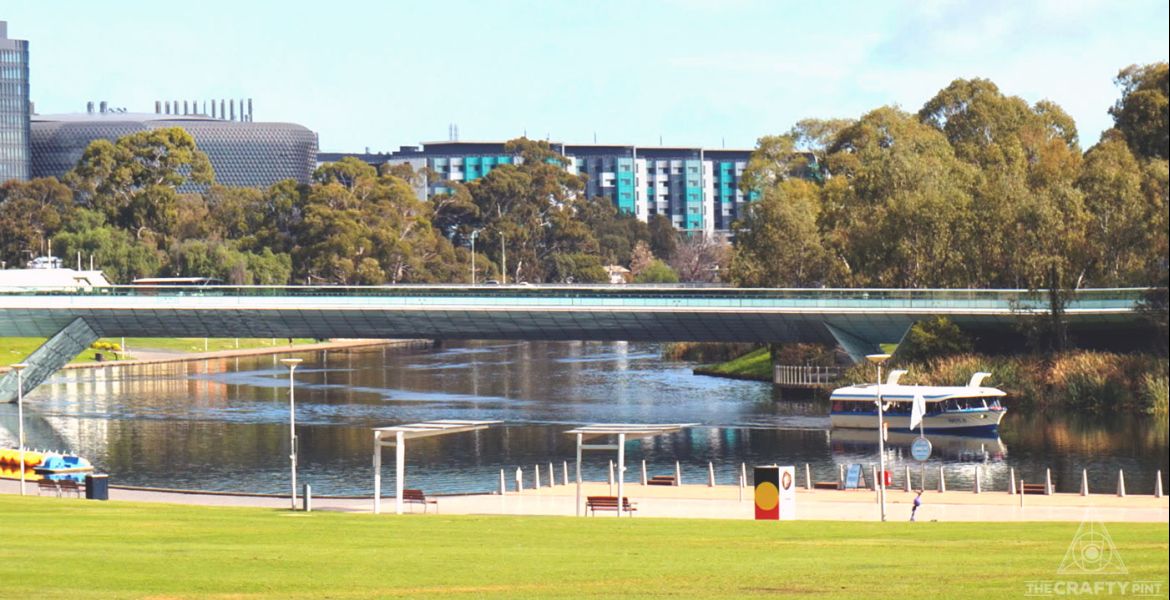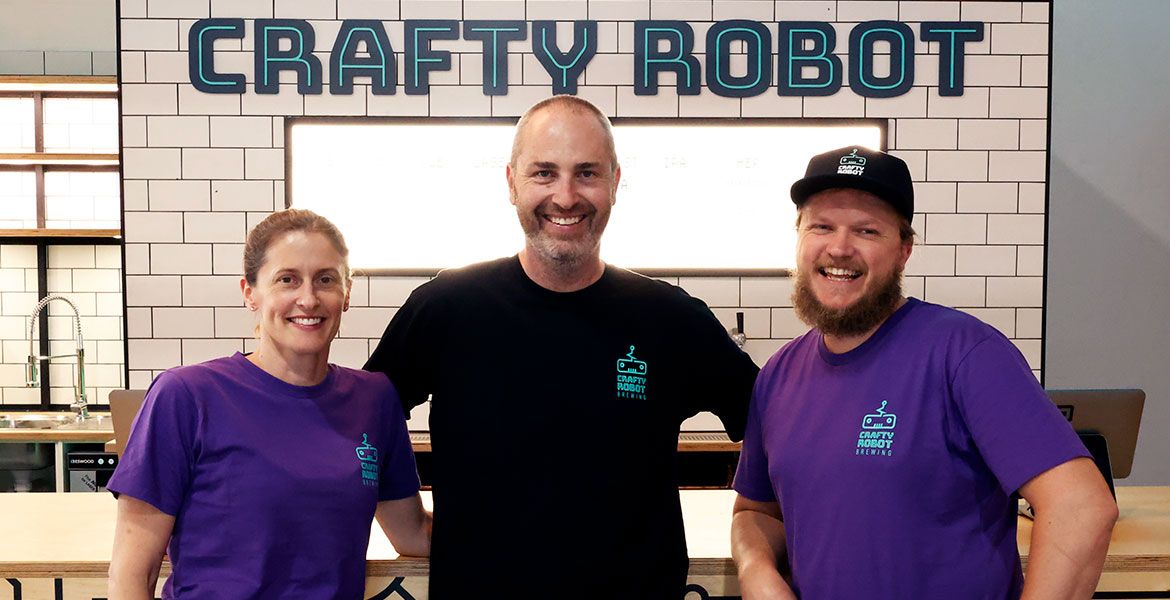The Pirate Life story is less than five-years-old, at least if you count the launch of the first cans of Pale Ale, IIPA and Throwback IPA as the starting point. Yet it's fair to say the trio who led the brewery's charge across the Australian beer landscape have crammed plenty into that time. And also that the roots of their story stretch back rather further, both here and overseas.
The rise, rapid growth and acclaim from the moment they released those first beers – just ten days after Hawkers, another new arrival to have made a significant mark on the local beer industry – looks like something of a precursor for Balter (albeit without the big name sportsmen among Pirate Life's backers stepping into the public sphere). Make excellent hop forward beers that bag you heaps of awards tied to a brand with appeal outside traditional craft beer circles, then work your arses off to get those beers into as many hands as possible while giving those you meet a good time along the way.
Their sale to AB InBev (and subsequent transfer into CUB and, as seems likely, Asahi, following AB InBev's departure from Australia) was one of those moments that sent shockwaves through the industry, particularly coming at the end of a rash of acquisitions that included 4 Pines and Feral. Whatever your thoughts on indie brewers joining a multinational, the operation founded by Mick "MC" Cameron, son Jack and his mate Red Proudfoot certainly had a plan for how to spend $15m.

Their new home in former woolstores in Port Adelaide is staggering in its scale, from the lettering spelling out PIRATE LIFE on the front wall designed to mimic that of the original owner's name on the adjacent building and the 50m peacock mural around the corner, to the towering brewery that sits behind the bar (soon to be joined by the 25 hectolitre brewhouse from their original site). It's capable of hosting thousands for special events, they plan to release 50-plus new beers there every year, and it's a space that continues to highlight their appeal as a lifestyle brand; the merch store features a range of skateboards as well as beer and tees.
Prior to leaving their home state of WA to set up the OG brewery in Hindmarsh, the trio had worked in various beer and booze roles. Mick started out in hospitality at 20 and worked in venues and as a rep across Australia before distributing Coopers and BrewDog across the US from 2007/8. That led to him helping BrewDog build their first bar in Aberdeen before a return to WA to work on major events like Gourmet Escape.
Meanwhile, his son Jack, who'd been at high school in the US, had gone to Scotland to do a three-month stint on the BrewDog bottling line. Despite having no prior brewing experience, within six weeks he was offered a full-time role. This led to him meeting Red, a fellow Western Australian who'd been helping out at Cowaramup Brewing in the Margaret River region before sharing a few beers with BrewDog co-founder Martin Dickie in Perth and following him back to Aberdeen.
The two spent two years living and working together there – "It was the very early days of BrewDog," says Mick, "where anything goes." – before returning to WA. Jack started at Little Creatures while Red oversaw the launch of Cheeky Monkey. It was at this time the trio began hatching the plans for what would become Pirate Life, and we reckon you've a fairly good idea how that turned out.
Mick Cameron

WHAT'S BEEN YOUR HIGHLIGHT OF THE PAST DECADE?
Being able to open up and grow a business with my son and his best mate.
WHAT'S SURPRISED YOU THE MOST ABOUT THE AUSSIE BEER SCENE?
The speed of change in the last five years has been astronomical: changing people's palates, their perception of beer and what it really is, what it means to them. Right across the board, from on-premise to off-premise and restaurants, there's a selection of beers.
The biggest story is going from 180 breweries [when they launched] to now 650. It's dramatic growth that brings passion to the industry.
WHAT ARE YOUR THOUGHTS ON THE HEALTH OF THE BEER INDUSTRY AS WE APPROACH THE END OF A REMARKABLE DECADE?
I think for a country the size of Australia we are almost at the cutting edge in terms of brewing numbers. If you can build a brewery tap model where you can sell 80 percent of your product over the bar and manage your cash flow well and you're in a country town [then there's still room in the market].
I would hate to see this country get to a thousand breweries because I don't think it can survive.
WHAT'S YOUR NUMBER ONE GOAL FOR THE NEXT DECADE?
From a business perspective, the biggest one for me is to get our team to continue to grow. Five years ago, the three of us had a vision and now we've got nearly 100 people working for us. Our first and second employees are still with us, so [I want] to see them develop as people and to see Red and Jack develop too; Jack is only 28 now, Red is in his mid-30s.
In ten years, I'd like to see not just the Port Adelaide brewery and town grow – I'm really excited about developing the brewpub in Perth. Then there might be other opportunities for small venues in Melbourne, Sydney and Brisbane.
AND, IF YOU HAD ONE CHRISTMAS WISH FOR BEER IN AUSTRALIA, WHAT WOULD IT BE?
An intense and improved focus on quality. And that's not shying away from anything I've said in the past.
We're opening a door on Crafty's Advent Calendar every morning up until Christmas Day and you can find them all here. And you'll find our take on their new core range Easy Ale here.

















